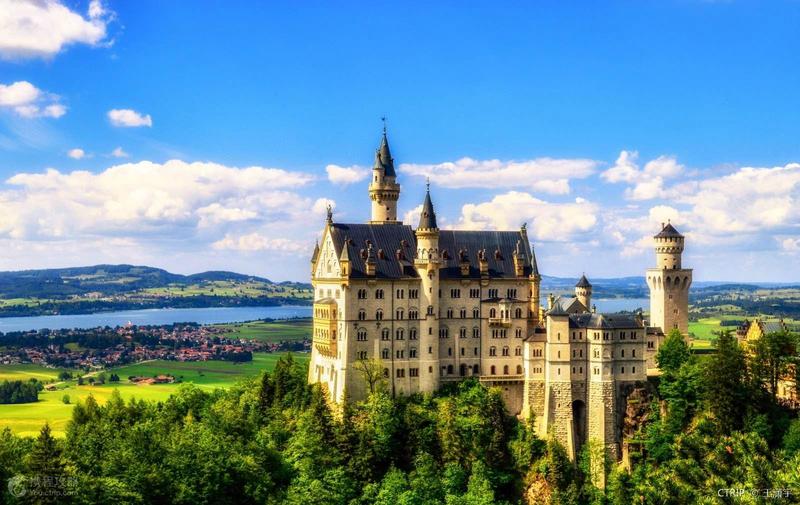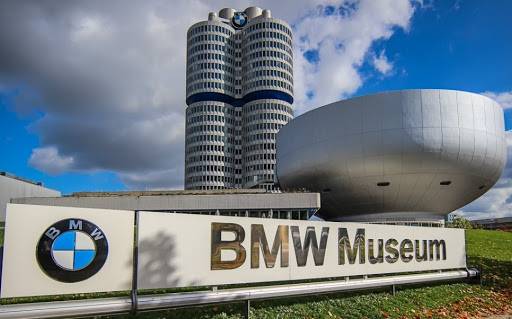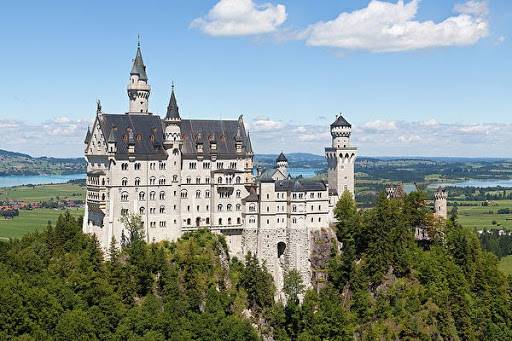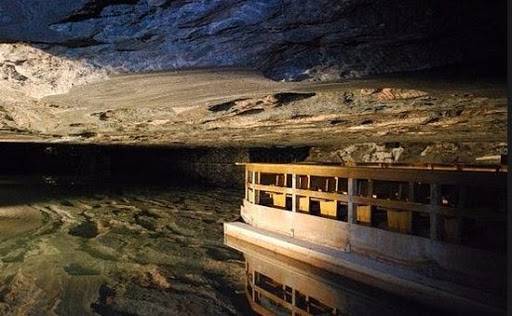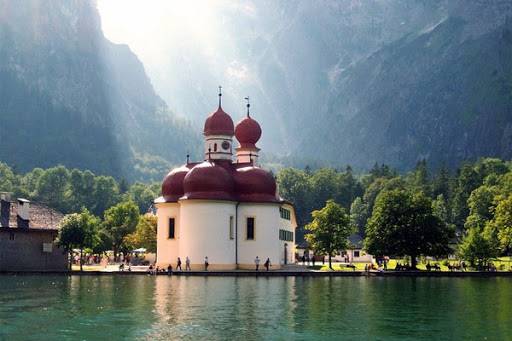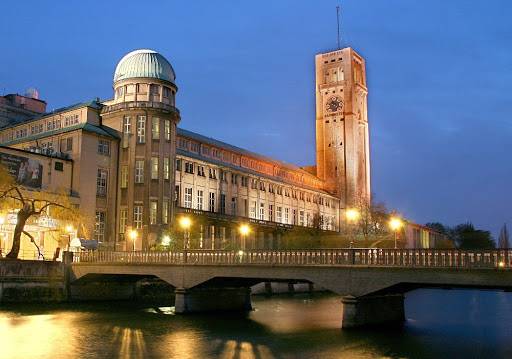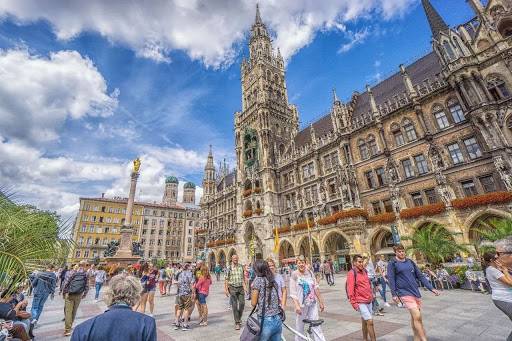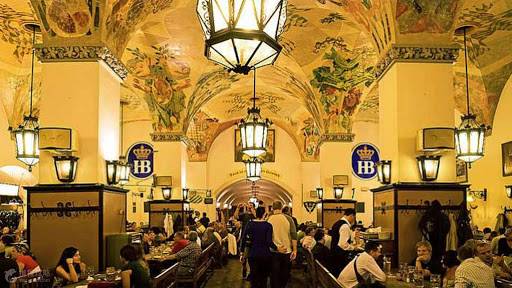BMW Museum
The BMW Museum is located at the BMW Welt in Munich, the global headquarters of BMW. It is a core component of the BMW Welt. The museum covers a total area of 5,000 square meters and features a 'bowl-shaped' design. It is situated next to the BMW 'Four-Cylinder' headquarters building. The exhibition halls of the BMW Museum are designed as a circular space, divided into seven thematic exhibition areas. These areas showcase various BMW cars, motorcycles, light motorcycles, and special-purpose vehicle samples produced over the years, categorized by different eras and periods. The museum employs modern sound, light, electricity, multimedia, and audiovisual materials to enhance the artistic space of the product displays, fully illustrating the growth and development history of the BMW automobile company.
BMW Welt
BMW Welt is located near the Olympic Park in Munich, adjacent to the famous BMW Headquarters and BMW Museum. The design of the building's exterior is full of ultra-modern flair, resembling a twisted glass tower. The unique double-cone structure and wavy roof vividly interpret the propeller image of the BMW brand. BMW Welt is a multifunctional center under the BMW Group for product display and customer experience. It is equipped with a conference center, youth classrooms, and a library. Various colorful events and exhibitions are held throughout the year, with exhibition content frequently updated. Admission is free.
Neuschwanstein Castle can almost be considered the star attraction of German tourism. This beautiful castle is located near Füssen in the Bavarian province of southern Germany, close to the German-Austrian border, and belongs to the Alps. Ludwig II, as the owner and builder of the castle, was deeply involved in the design and construction of the entire castle. The completed parts of the castle are exquisitely decorated and lavishly adorned. Many rooms reflect his fervent admiration for the medieval knightly spirit depicted in the works of contemporary German composer Wagner.
Königssee (German: Königssee) is located near the town of Berchtesgaden, which borders Germany and Austria. It is part of the Berchtesgaden National Park and is surrounded by the Alps. The lake was formed by glacial erosion, giving it a landscape similar to the Nordic fjords. It is renowned for its lush greenery, overlapping misty peaks, and exceptionally clear waters.
The history of the Berchtesgaden Salt Mine dates back to the 12th century. It wasn't until 1517 that the salt mine was officially established and mining operations began. Three hundred years later, in 1816, parts of the mine were opened to tourists. In 1880, the mine was fully opened, allowing visitors to explore this fascinating underground world. The journey is filled with peculiar rocks and mysterious salt pools. The colorful lights and the enigmatic salt pools have a history of at least 250 years, and were submerged underwater until 150 years ago.
Mirror Lake
Located deep within the salt mines, Mirror Lake has a high salt content. The lake's surface is like a mirror, reflecting images clearly as if it were an actual mirror, hence its name. As you walk from one side of the lake to the other, you will see the crystals at the bottom gradually growing larger, as if by magic. Under the illumination of lights, they sparkle beautifully and mysteriously.
St. Bartholomew's Church
Take a boat to the Hirschau Peninsula on the west bank, where the St. Bartholomä Chapel (German: St. Bartholomä) is a landmark of Königssee. The church originated in the 12th century and is famous for its unique design. The red domes are onion-shaped, and the semicircular apse of the chapel is divided into three symmetrical sections.
The Deutsches Museum is located on an island in the Isar River and is one of the world's earliest science and technology museums. It is the largest of its kind in Europe. The museum houses approximately 100,000 items, with 25,000 on display, covering natural sciences and technology, primarily focusing on Germany's core industries and key research areas such as physics, chemistry, heavy industry, infrastructure, and aerospace. The museum also features an observatory and a planetarium. Notable exhibits include a later restored Galileo laboratory, submarines and rockets invented by Germany during the two World Wars, and a simulated underground mine.
Marienplatz
Marienplatz is located in the center of Munich. The square was built in 1158 and is the largest and most important square in Munich. Because Munich's new and old town halls are around the square, Marienplatz is also known as Munich's 'city living room.' It is now Munich's transportation hub and a place for various political and cultural activities, as well as for citizens' leisure, entertainment, and gatherings. Bayern Munich football team also celebrates their victories here. No matter when, Marienplatz is always bustling. If you want to explore Munich thoroughly, Marienplatz is a good starting point. Although Marienplatz is not large, it is full of Munich's historical and cultural heritage.
The New Town Hall is located on the north side of Marienplatz and is a dark Gothic building constructed in the late 19th century. The facade is adorned with statues of Bavarian kings, as well as heroes, saints, and figures from allegories and legends. The entire building is grand in layout and lavishly decorated, built in three phases over a period of 40 years from 1867 to 1904. The 85-meter-high clock tower of the town hall houses the largest wooden puppet clock in Germany and is one of Munich's most iconic landmarks. It is also the highest point within the old town ring road, apart from the Church of Our Lady, with no other buildings allowed to surpass the height of the clock tower. The 'Glockenspiel' on the clock tower is the fourth largest puppet dance in Europe and is renowned far and wide.
Fraumünster Church is a landmark building in the old town, retaining a strong medieval atmosphere. Many famous people, including Lenin and Einstein, have lived here. The church was originally a monastery established in the 9th century, and it features beautiful stained glass windows created by Chagall.
Hofbräuhaus
Hofbräuhaus is one of the most popular restaurants in Munich, located northeast of Marienplatz, just a five-minute walk from the square. Hofbräuhaus was originally built in 1589 during the reign of William V as a royal brewery and opened to the general public in 1828. Over the centuries, Hofbräuhaus has become the best place for celebrities and politicians to gather. Princess Sisi, Goethe, Lenin, and others have all been guests of the beer hall. In 1780, Mozart composed the opera 'Idomeneo' as a memento. However, what made Hofbräuhaus famous worldwide was Hitler. In 1923, Hitler attempted to overthrow the republic, and it was at Hofbräuhaus that he kidnapped Bavarian leaders and later delivered his famous '25-point program.'
